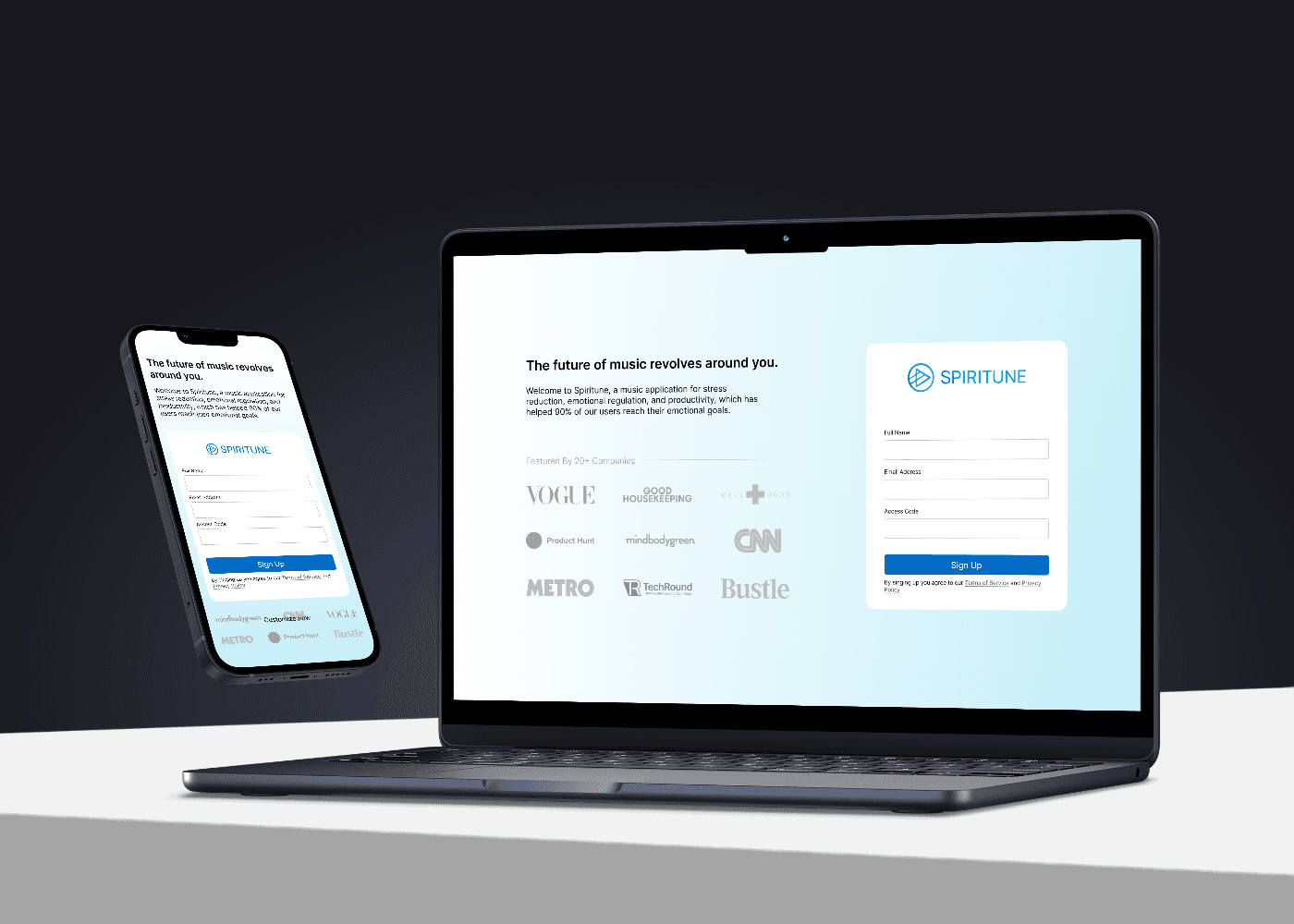Vision Track
2-Month Discovery Sprint

Overview.
Overview
VisionTrack helps teams stay aligned in fast-paced, remote environments by translating company goals into daily clarity. We started by designing for startup founders, but early research revealed they didn't want another tool to log into. More importantly, they weren't struggling to set goals, they were struggling to act on them. People understood company priorities, but couldn't connect them to day-to-day decisions. Alignment wasn't the issue, translation was. So we pivoted to SMB Sales and Marketing teams, cut 80% of features, and defined a Slack-based MVP: one reminder loop, delivered inside the tools they already used.
Design Objective
Our main objective was to apply lean startup principles, experimenting, iterating, and pivoting quickly, to define an MVP that meets user needs. We aimed to address the core pain points around goal alignment, while testing innovative ways to keep teams focused and motivated.
Conclusion First.
Outcome
We uncovered the real gap: teams didn't struggle to set goals, they struggled to act on them day to day.
We pivoted from startup founders to SMB Sales and Marketing teams, reframed the problem around “goal translation,” and scoped a focused MVP: one Slack-based reminder loop, delivered inside the tools teams already use. This direction reduced product complexity, aligned tightly with behavior, and eliminated adoption friction, setting a clear foundation for future prototyping.
What I Learned
We spent too long validating the segment before testing behavior, so by the time we were ready to prototype, we ran out of time. The research gave us confidence in the pivot, but it came at the cost of momentum. I learned that deep research is valuable, but only when balanced with early behavioral validation. In future projects, I'd prototype sooner, testing one high-signal behavior after just 5–6 interviews, rather than waiting for full certainty. Fast feedback beats over-validating assumptions.
Research & Findings.
We ran interviews with 5 startup founders and 20 SMB execs (CPOs, PMs, team leads). Instead of pitching features, we focused on context and behavior. Using open-ended prompts like “walk me through how your team tracks goals today.”
Insights That Informed Our MVP Pivot
Founders didn't want “another dashboard”,they defaulted to Excel or Notion.
They didn't want another tool to manage and log into.
The real pain was not “setting goals,” but translating them into meaningful, actionable work.
Slack was the best channel for driving behavior change without requiring login friction.
Trying to serve every team diluted the value. Narrowing to Sales and Marketing gave us clarity and focus.
Value Propositions

What Changed Our Mind.
What Surprised Me
Most teams didn't lack strategy, they lacked daily visibility into it. In nearly every interview, people could recite their company's mission or top-line OKRs. But they struggled to answer: “What does this mean for me today?” “We already have goals. We just don't know what to do with them day to day.” (Marketing Manager). This realization reframed our entire direction. Manager. This realization reframed our entire direction.
MVP Direction
We cut 80% of our feature ideas, dashboards, metrics views, onboarding flows. Instead, we focused on a single Slack-based reminder loop.
Why Build on Slack?
Users told us they didn't want to log into yet another tool. Slack was already in their flow, and frictionless adoption was a requirement, not a nice-to-have.
We designed a lightweight flow:
1. Manager sets OKRs at the start of the cycle.
2. ICs get simple, periodic Slack reminders: “Which of your tasks support this objective?”
3. Managers get aggregate insights via Slack thread summaries, no login required.
Discovery Sprint.

Hypothesis #1.
Why we chose this hypothesis?
I applied lean startup methodology to test our ideas quickly. We hypothesized that startups, given their fast-paced environments, would benefit from an alignment tool.
Research #1.
Interviewed
5 Founders
Challenges
Decision + Learning
Through these interviews, I discovered that while startups do struggle with alignment, many wouldn't invest in a dedicated goal-tracking solution. This prompted me to question our target market and refine our hypothesis to address a different segment. As a result, I made the strategic decision to shift our focus to SMBs and refine our hypothesis to better address their unique challenges and needs.
Hypothesis #2.
- High-level company goals become diluted or lost in translation.
- Employees struggle to connect daily tasks to broader objectives.
- Existing tools are overwhelming and fail to provide quick clarity.
User Personas.


Research #2.
Interviewed
20 People (Product manager, CTO, CEO, CPO, Founder)
Quotes
Pain Points
Decision + Learning
We decided to focus on a single department within an SMB, specifically Marketing or Sales. This narrower scope makes it easier to pilot new tools, generate measurable results, and avoid developing a watered-down product trying to serve every department at once.
Competitive Analysis.





Let's make something users will love!
If you're looking for a product designer who can bridge the gap between design and code, I'm here to help!




